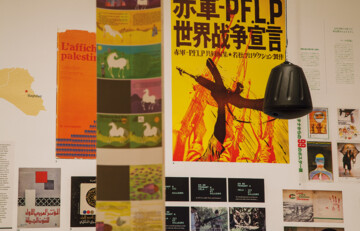The term “heterochronia” tries to address the question of the politics of the time (chronopolitics) by looking into the relationships between language (representation, narratives), power, and temporality. This is both an epistemological question and a methodology for doing history. Michel Foucault borrowed the term “heterochronie” from the biological language1 in the lecture “Des spaces autres” (1967) to interrogate the modern Western construction of time and its relationship with hegemonic historical narratives. Heterochronia does not refer to time as an abstract dimension of physics but rather to time as social and political construction. Interesting enough, Foucault thought archives, libraries, and museums as “heterochronias”, political dispositifs to “accumulate time.” A museum works as a time machine that configurates history as chronological and visual fiction (Stephen Kern). What are the times that museums are accumulating? And what other times resist normative narratives and reject accumulation as a historical method? Building upon a critique of naturalized time already developed by Mikhail Bakhtin and Henri Lefebvre, Foucault’s notion opens up the possibility of understanding the museum as the collective abstract machine to construct “other times”, not only to question the storyline of the past but also to invent “other” futures. By claiming “other times”, this project focuses on those temporalities that suspend, neutralize or reverse the dominant narratives of art history: those coming from linguistic, national and political minorities, feminist and sexual “molecular” movements, as well as other modes of perception and cognition (disability movements). Heterochronia relates to a series of concepts coming both from the art practices after the 1960s but also from political movements and critical theory: the notion of “chronopolitics” (Paul Virilio) stresses the links between capitalism, technology, and temporal production; ephemerality and performativity can be understood as “operations within time” (Judith Butler), modernity as a “time in ruins” (Marc Augé); anachronism as the “opening up of history” (Didi-Huberman) and the political intervention as the possibility to “switch temporalities” (Rancière); the “contemporary” as a site of experimentation with multiple times (Agamben); and “unproductive time” as a strategy to resist “acceleration” as the dominant time of modernity (Harmut Rosa). Heterochronic reading as a historical method is an effort to produce “situated knowledge” (Donna Haraway) to subvert history in terms of a single threat of linear time (“the time of progress and the time of the winners”- Walter Benjamin) and to critically engage into a proliferation of (vertical or fractal) layers of time that fight to produce other histories. *In biology, the term heterochrony was first introduced by German evolutionary zoologist Ernst Haeckel in 1875. It designates an evolutionary change in the timing of development producing differences in size or shape in an organism. Stephen Jay Gould has recently redefined this term referring to changes in patterns of development.



